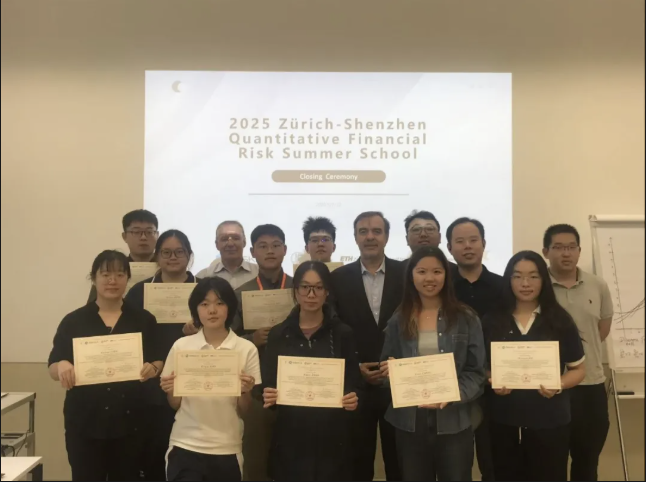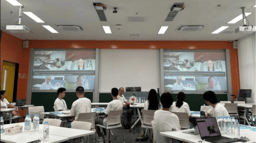LIA Stage 4: Reflections, Certifications, and Lessons in Leadership

When the last ceremony ended — certificates handed out, photos taken, thank-you speeches delivered — I finally had a chance to pause and reflect. For weeks, my life had been consumed by the Life with AI camps: first Shenzhen with underprivileged high school students, then Zurich with ambitious university students. The pace was relentless, the challenges constant, and the learning curve steep. But as the programs came to a close, I realized that the true story wasn’t just about AI or financial literacy. It was about leadership, resilience, and shaping opportunity for the next generation.
Closing the Circle
We ended both camps with formal ceremonies. In Shenzhen, the focus was on celebrating courage — for many of the underprivileged students, simply attending a camp at SUSTech and presenting their ideas was a milestone in itself. Certificates symbolized more than participation; they represented possibility. I wanted the students to leave not just with paper in hand, but with a seed of belief that their future could be different.
In Zurich, the ceremony was more formal, reflecting the professional setting of ETH and the level of the university students. Professors and executives joined us, and recognition carried weight — not only for the students, but also for the credibility of the program itself. Teachers were effusive in their thanks, with one even sharing the experience on LinkedIn. Their appreciation felt like validation for the countless invisible hours of work behind the scenes.
I also organized thank-you letters for guest speakers and partner institutions. Gratitude mattered: not only to sustain these partnerships for the future, but because this project was never just about me. It was about building a network of educators, professionals, and institutions committed to guiding students into the age of AI.
The Students’ Reflections
The feedback from students was mixed, and in that, it was instructive.
The high schoolers in Shenzhen often spoke with emotion and energy. Some shared that they had never imagined careers in AI, finance, or design before. Others said they now believed — for the first time — that their rural background didn’t have to define their future. Those reflections, however modest, felt like breakthroughs. Even if only a fraction of those students pursue new paths, the camp succeeded in planting seeds.
The university students in Zurich were different. Their reflections were often more surface-level: lists of facts they had learned, concepts they had been exposed to, names of companies they had visited. Valuable, yes, but less transformative than I had hoped. It made me question whether the camp had achieved its full potential. Were we too broad in admissions? Did we design the promotional materials to attract the right mindset? Could the curriculum have gone deeper into application and less into theory?
These are questions I still carry. Perhaps the real test will come later — if students gain opportunities at ETH or in industry because of this program, the long-term impact will reveal itself.
My Own Growth
For me, the greatest learning was personal.
I learned how to organize across borders: securing visas, booking hotels and classrooms in a country I had never visited, managing across time zones. Every confirmation email felt like a gamble, every smooth execution on the ground a relief.
I learned how to lead among peers, especially in Zurich. The university students were my age, yet I was in charge. At times, this created distance — they saw me as a TA, not as a peer. At first, this stung. But eventually I understood that leadership sometimes requires boundaries. If I had been “just a friend,” I would not have been able to guide them effectively. Respect sometimes looks like distance, and that’s a balance I’m still learning to manage.
I also learned that leadership is not only about logistics, but belief. In Shenzhen, I had to confront the reality of learned helplessness among rural students — and find ways to spark curiosity and hope. No spreadsheet can solve that problem; it requires empathy, patience, and creative adaptation.
Looking Forward
The experience has left me with both pride and questions. Pride, because in just a few weeks, I went from two separate ideas — financial literacy and Life with AI — to running international camps with 100 students and 15 teachers across two continents. Questions, because I know it can be better: admissions can be sharper, promotion clearer, curriculum deeper.
Most of all, I came away with a conviction: the age of AI is not just about technology. It is about people.
Helping students step into this future is not only about teaching them algorithms or financial models. It is about giving them confidence, opportunity, and vision. It is about ensuring that underprivileged children believe they can change their futures, and that university students see AI not just as a buzzword but as a tool they can use to shape society.
That, to me, is the real leadership challenge of our generation: to guide not only ourselves, but also those coming after us, into an uncertain but opportunity-filled future.
Final Thought
As I look back on the certificates, the thank-you letters, and the photos of students in Shenzhen and Zurich, I know the work is far from over. These camps were just a beginning. Life with AI is not a single event — it is a long-term mission to bridge access, belief, and opportunity.
And for me personally, it is a reminder that leadership is learned not in theory, but in practice — in the messy, unpredictable, and deeply human process of trying to make a vision real. Additionally, it is also a way for me to figure out what exact career path I want to follow and what ethic I want to promote and believe in myself in a time of rapid change.



Please sign in
If you are a registered user on Laidlaw Scholars Network, please sign in